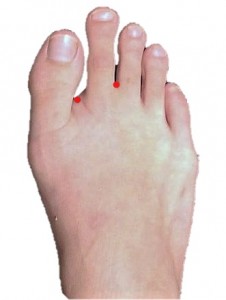More specifically, a Morton’s foot is when the long bone in your foot connecting to your 2nd toe is longer than the long bone connecting to your big toe. You can recognise a Morton’s foot if the indent (gap) between your 1st and 2nd toe is lower than that of the indent (gap) between your 2nd and 3rd toe.
There is nothing abnormal with having a Morton’s foot as somewhere in the order of 20% of the population have them.
There are some subtle biomechanical diiferences between those who have a Morton’s foot and those that don’t. Having a Morton’s foot does not mean that you will have any weird or wonderful issues with your feet. In saying this though, we do know that having a Morton’s foot can place you at increased risk of:
- plantar fasciitis
- foot stress fractures
- calluses under the ball of your foot
- pain through the forefoot
- neuromas (nerve pain)
- hammer toes
- having altered biomechanics which may cause ankle, knee or hip issues.
If you have a Morton’s foot and aren’t having any issue then there isn’t anything you need to do about it…you just know that your foot shape now has a name!
If you do have issues as outlined above then you should consult with a physiotherapist (or podiatrist) who understands how to assess and manage the conditions, taking into consideration your foot shape.







